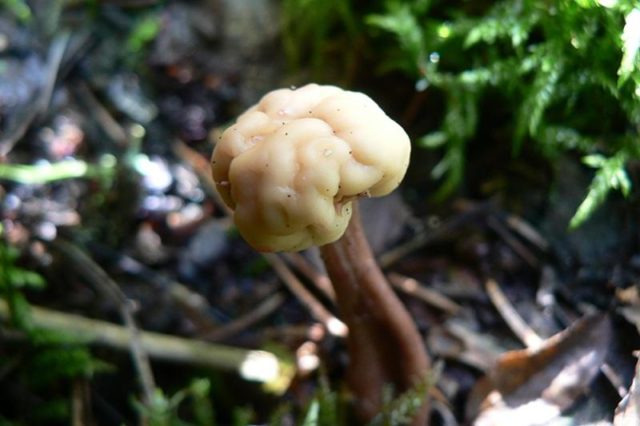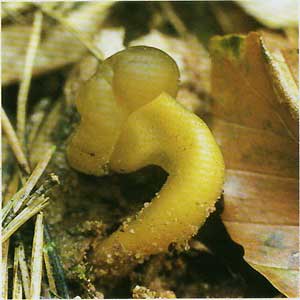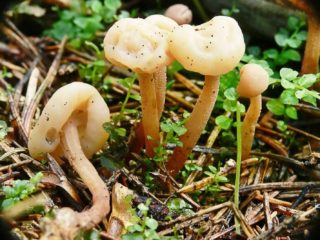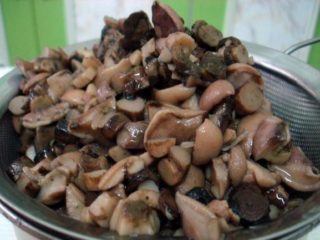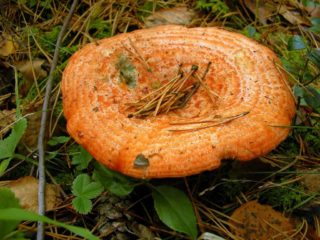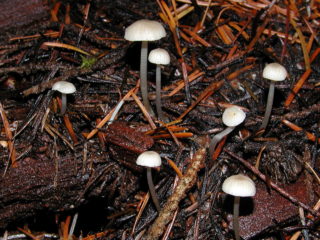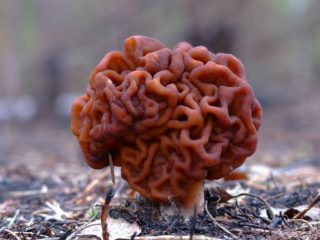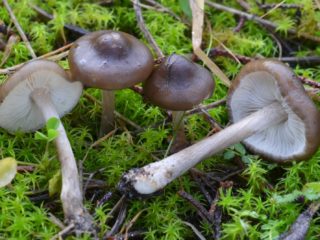Content
Doubtful kudonia is a marsupial mushroom or leocyomycete belonging to the Kudoniev family, the order of Rhytism. The characteristic features of this representative were studied by the Italian scientist Giacomo Bresadola. The first information about these mushrooms appeared in 1828.
What dubious kudonia look like
Doubtful kudonia forms a fruiting body - an apothecia, consisting of a leg and a cap, on the surface of which there is a layer of bags called asci. Spores ripen in these bags. They open up in the form of breaks or cracks.
Description of the hat
The hat reaches 1.5 - 3 cm, has a color from light brown, beige to dark brown. Its shape is convex, less often flattened, the edges are wrapped inward. The surface is uneven, bumpy, becomes slimy during rains. Inside the caps there is a loose and whitish flesh with the smell of almonds; at the junction with the stem, the surface of the fruit body is wrinkled.
Leg description
The legs of the apothecia grow up to 5 cm. Sometimes they are tall, reaching 8 cm. They are thin, hollow inside, up to 0.2 cm in diameter, can expand upward. The color of the entire apothecia is light, slightly darkening downward.
Where dubious kudonia grow
These mushrooms grow in coniferous forests. Growth features:
- the presence of spruce litter, moss;
- arrangement in spiral groups;
- the season of appearance is from July to September, the mass ripening period is the second half of August.
It is a rather rare species found in Asia, Korea and Europe. But if he appears in the forest, then in whole colonies, forming "witch circles" according to the description of eyewitnesses. In Russia, it is less common, in some places it can be seen in the European part. Another type of this family is curled kudonia, this is a more common mushroom in our country.
Is it possible to eat dubious kudonia
This species is inedible. But nothing is known about its toxicity. Perhaps research in this area is ongoing.
Mushroom twins
There are not so many dubious kudonia twins. Some mushroom pickers confuse it with swirling kudonia. The difference is that the color of the leg is slightly lighter than that of the cap.
Also, this mushroom is similar in appearance to leotia gelatinous lubricant. But in Leotia, the hat has a false character: in fact, it is a continuation of the leg. It does not take on a widespread form. The pulp has a putrid odor. It is edible, but due to its small size, it has no practical value.
Conclusion
Doubtful kudonia has not been studied well enough by mycological scientists. And outwardly, it can easily be confused with other species of this class, for example, with the second representative of the family, swirling kudonia. They are not eaten, although this variety is not considered poisonous.


